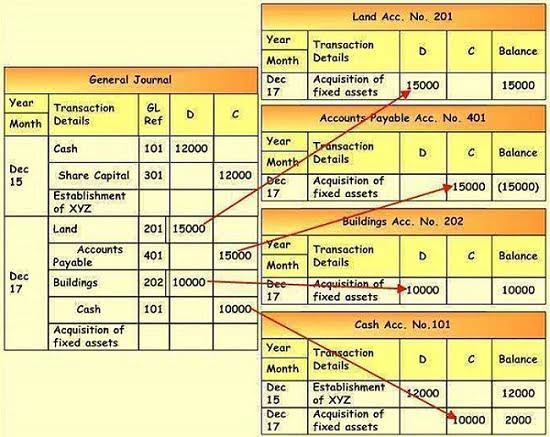Bookkeeping
The Complete Guide to Functional Expenses for Nonprofits

The primary financial statements used by nonprofits include the Statement of Financial Position (or Balance Sheet), the Statement of Activities (or Income Statement), and the Statement of Cash Flows. Each of these serves a distinct purpose, offering a snapshot of financial status, performance over a period, and cash flow, respectively. Each organization’s statement of functional expenses will look slightly different depending on what natural expenses they incur and how resources are allocated. However, the functional expense categories of program, administrative, and fundraising costs are consistent for all nonprofits. Allocating expenses by function is an unavoidable part of running a nonprofit organization. Properly classified and recorded functional expenses allow the organization to appeal to donors and keep their nonprofit tax-exempt status.

In Pursuit of Good Accounting and Good Governance
Common classifications of functions include programs, administrative and general, and fundraising. Natural classifications describe the expenses by the group that describes the cost, like salaries, rent, or professional services. Understanding how to properly prepare a statement of functional expenses doesn’t just show you how money was spent. It also helps you reflect on and analyze whether you can improve that spending to further your mission. Understanding how to prepare a Statement of Functional Expenses is key to effectively manage your non-profit organization’s finances. It helps you ensure that funds are Accounting for Churches being used efficiently and in alignment with your mission.
- The income statement, statement of cash flows, statement of retained earnings, and the statement of stockholders’ equity report information for a period of time (or time interval) such as a year, quarter, or month.
- The FASB requires every nonprofit to present expenses by function and nature in one place (statement or notes).
- Insurance Expense, Wages Expense, Advertising Expense, Interest Expense are expenses matched with the period of time in the heading of the income statement.
- This report would more accurately be called a Statement of Activities by Class (function) or a Line Items by Activity Report.
- Such transparency is essential for stakeholders, including donors, board members, and regulators, to assess the financial health and mission alignment of the nonprofit.
Explore Our Services
- Since a nonprofit organization does not have owners, the third section of the statement of financial position is known as net assets (instead of owner’s equity or stockholders’ equity).
- This financial statement reports the amounts of assets, liabilities, and net assets as of a specified date.
- If your nonprofit records expenditures based on natural categories, why do you need to report on your functional expenses?
- Federal grants can provide essential funding for nonprofits, but managing these grants requires a thorough understanding of federal requirements and meticulous compliance.
- That makes a nonprofit accountant’s job much easier when booking functional expenses and gives options for how an organization should best do it.
- Internal Revenue Service, a nonprofit organization may be granted tax exempt status.
Your nonprofit’s statement of functional expenses is vital to an effective financial management strategy. While its main purpose is to ensure compliance with federal and state regulations, analyzing it and applying the insights you glean to your expense allocation and budgeting provides even more value for your organization. Functional expense allocation can be done on the face of the statement of activities, in the notes to the financial statements, or as a separate statement of functional expenses (SFE). Most nonprofit organizations that have more than one program find the SFE the most effective method of recording expenses.

What are natural expenses?

The document should include the determined disclosure method, as well as approved classifications of functions. Use the document to communicate with accounting personnel, organization leaders, auditors, and other users of the financial statements. We’ve listed some best practices for the allocation of functional expenses to keep in mind when setting up accounting procedures at your nonprofit or preparing to compile year-end financial statements. Meanwhile, fundraising expenses are necessary for nonprofits to attract the resources they need to fulfill their mission. However, these organizations need to actively manage these costs relative to their overall budget. As a result, this ensures they direct the majority of their funds toward program services.

The statement of functional expenses is described as a matrix since it statement of functional expenses reports expenses by their function (programs, management and general, fundraising) and by the nature or type of expense (salaries, rent). For instructional purposes we highlighted the column headings to indicate the expenses by function. We also highlighted the words in the first column as they indicate the nature or type of expenses. If you are new to nonprofit accounting, your first step is to understand the basic principles and needs of statements of functional expenses. This includes understanding how to allocate functional expenses into classifications to build a functional expense report.

A nonprofit organization incurs fundraising expenses specifically for activities they undertake to solicit and manage donations. Consequently, the Statement of Functional Expenses typically reports these expenses separately. Then allocate those total expenses to each of your functional expense categories using the process you’ve defined for your organization. It is a very common report in the financial world retained earnings balance sheet and you may want to add it to your in-house reporting schedule.
These categories are then broken into the nature of the organization’s expenses. Natural classification relates to the economic benefits obtained from incurring these expenses. For example, an organization may incur travel expenses related to program services, fundraising and management activities. It could also incur promotional costs for only fundraising purposes, or it could incur printing expenses for only M&G purposes. Create a written and approved functional expense allocation plan to act as a guide for expense allocation procedures.

